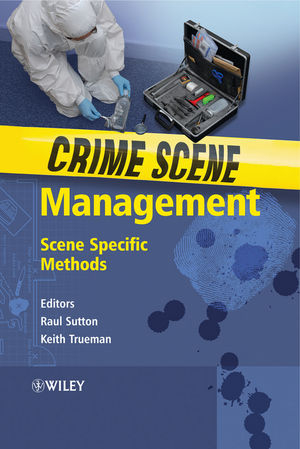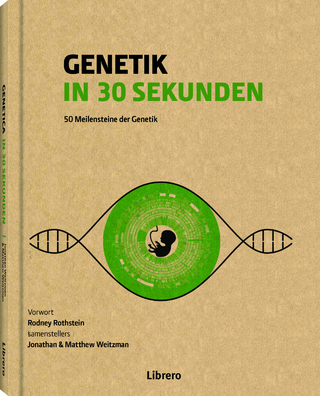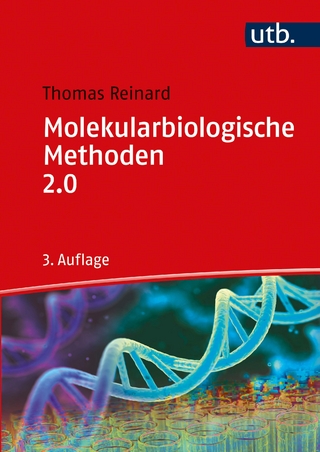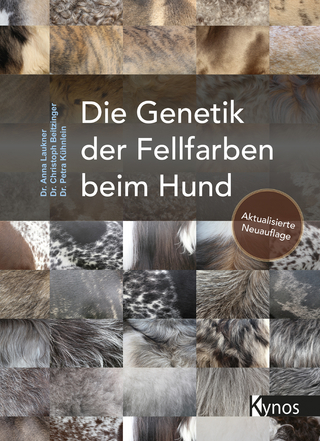
Crime Scene Management
Wiley-Blackwell (Verlag)
978-0-470-01678-7 (ISBN)
- Titel ist leider vergriffen;
keine Neuauflage - Artikel merken
Crime Scene Management is an accessible introduction to the common forms of evidence that may be encountered at a scene of crime and the techniques used for recovery of that evidence. The book is clearly focused on the techniques for handling crime scenes from the role of the first officer attending through to the specialist personnel who may be called to deal with specific evidence types. Clearly structured to enhance student understanding, methods covered include, DNA-rich samples, fingerprints, toolmarks and footwear impressions. Later chapters move on to consider examples of specialised scenes such as arson and vehicle crime. The content of each chapter can be tested with self-assessment questions to reinforce student understanding. Written for undergraduate students studying forensic science courses, Crime Scene Management will also be of interest to scene of crime officers, police officers and legal professionals as well as students taking courses in criminalistics and law.
Focuses on the crime scene and on the science underpinning the gathering of evidence at the scene Written in conjunction with experienced practitioners Supplementary website to include figures from the book and further references Suitable for delivery in a modular course. Chapters written by a team consisting of experts and academics to ensure an accessible and well-informed text.
Introduction and Use of This Text xi List of Contributors xv PART I Crime Scene Principles 1 1 The Crime Scene Context 3 Raul Sutton 1.1 Introduction 3 1.2 What is a crime? 4 1.3 The nature of the UK legal system 6 1.4 The legal system in England and Wales 7 1.5 Other courts 9 1.6 The judicial system in Northern Ireland 10 1.7 The Scottish legal system 11 1.8 Judicial processes that deal with causes of death 13 1.9 What constitutes evidence? 15 1.10 The chain of events in evidence gathering 16 1.11 The relationship between evidence gatherers and analysts 19 1.12 Health and safety considerations 20 2 First Officer Attending 21 Keith Trueman 2.1 Introduction 21 2.2 Response to incident report 22 2.3 Personnel involved in the investigative process 23 2.4 Recording and recovery of scientific evidence 24 2.5 Initial considerations of the first officer attending (FOA) 24 2.6 Dealing with the victim 26 2.7 Dealing with witnesses 27 2.8 Dealing with suspects 28 2.9 Dealing with the crime scene(s) 28 2.10 Documentation 33 2.11 Dealing with violent crime 34 2.12 Summary and conclusion 35 3 The Role of the Scenes of Crime Officer 37 Keith Trueman 3.1 Introduction 37 3.2 Training the SOCO 38 3.3 The responsibilities of a SOCO 39 3.4 Forensic evidence 41 3.5 Request for SOCO attendance at crime scenes 45 3.6 Actions when attending the crime scene 46 3.7 Initial scene assessment (including health and safety considerations) 46 3.8 Planning evidence recovery 49 3.9 Record the evidence 50 3.10 The elimination process 56 3.11 Details of evidence recovered 56 3.12 Integrity, continuity and contamination 57 3.13 Packaging materials 62 3.14 Conclusion 67 4 Police Photography 69 Chris Crowe 4.1 Introduction 69 4.2 General guidelines 70 4.3 Equipment 71 4.4 Exposure 72 4.5 Image quality/size 77 4.6 Depth of field 78 4.7 White balance 80 4.8 Image data 81 4.9 Flash photography 82 4.10 Room interiors 84 4.11 Vehicles 84 4.12 Exhibits 85 4.13 Assaults and woundings 85 4.14 Night photography 88 4.15 Footwear impressions 89 4.16 Fingerprints 90 4.17 Recording video evidence at crime scenes 92 4.18 The use of digital images in court 94 PART II Evidence Gathering Techniques 97 5 Fingerprints 99 David Charlton 5.1 Introduction 99 5.2 The nature of friction ridge skin 101 5.3 The structure of friction ridge skin 102 5.4 Friction ridge growth 103 5.5 Principles of friction ridge identification 104 5.6 Comparison methodology 106 5.7 Chemical composition of latent prints 107 5.8 Identification of common locations for prints 109 5.9 The use of powdering techniques to enhance latent finger marks 112 5.10 Chemical development techniques 115 5.11 Laboratory and scene applications 117 5.12 Fingerprints in bodily fluids 120 5.13 Scenes of fire 122 5.14 Optical methods to reveal fingerprints (laser and other light sources) 123 5.15 New and emerging techniques 126 5.16 Summary 127 6 DNA-Rich Evidence 131 Terry Bartlett 6.1 Introduction 131 6.2 Historical background 131 6.3 The structure and properties of DNA 132 6.4 DNA analysis 133 6.5 Types of DNA testing 133 6.6 Biological evidence 136 6.7 Procedures for collection of biological evidence: general considerations 139 6.8 Limitations of DNA evidence 150 6.9 Elimination and reference samples 151 6.10 Summary 151 7 Blood Pattern Analysis 153 Terry Bartlett and Raul Sutton 7.1 Introduction 153 7.2 History of the development of blood spatter as a scientific discipline 154 7.3 Composition of blood 155 7.4 Physical properties of blood 156 7.5 Causes of bleeding 157 7.6 Blood dynamics 158 7.7 Drop-surface impact and droplet pattern 159 7.8 Determination of area of origin of spatter 162 7.9 Cast-off patterns 164 7.10 Arterial damage patterns 164 7.11 Non-spatter patterns 167 7.12 Physiologically altered blood stains (PABS) 170 7.13 Volume blood stains 174 7.14 Composite patterns 176 7.15 Investigative transfer and contamination issues 176 7.16 Recording traces 177 7.17 Summary 179 8 Physical Evidence 181 Craig Williams 8.1 Introduction 181 8.2 Tool marks 181 8.3 Clothing 184 8.4 Fibres 184 8.5 Footwear impressions 187 8.6 Glass fragments 189 8.7 Glass fragmentation 191 8.8 Soils 193 8.9 Firearms 194 8.10 Scene recovery of firearms 198 8.11 Gunshot residues (GSR) 199 8.12 Drugs of abuse (DOA) 201 8.13 The crime scene characteristics of various DOA's 202 8.14 Presumptive tests for drugs 204 8.15 Amateur explosives 206 8.16 Summary 207 PART III Specialised Scenes and Report Writing 209 9 The Examination of Fire Scenes 211 Chris J. Perry 9.1 Introduction 211 9.2 The nature of fire 211 9.3 The oxygen demand of fuels 214 9.4 Flame and fire classifications 216 9.5 Types of evidence specific to fire scenes 217 9.6 Locating the seat of the fire 219 9.7 Evidence gathering methods 220 9.8 Methods for ascertaining whether a crime has been committed 222 9.9 Health and safety considerations 224 9.10 Summary 225 10 Examination of Recovered Stolen Motor Vehicles 227 Keith Trueman 10.1 Introduction 227 10.2 What is a motor vehicle? 229 10.3 The definition of an auto crime 231 10.4 Auto crime scene examinations 233 10.5 Requests to attend an 'auto crime' scene 234 10.6 The examination process 236 10.7 Conclusion 247 11 Preparing Reports and Statements 249 Keith Trueman 11.1 Introduction 249 11.2 Documentation at the crime scene 250 11.3 Photography 251 11.4 Plans, sketches and diagrams 251 11.5 The exhibit label 253 11.6 Handling the evidence 257 11.7 Statements of evidence 260 11.8 Criminal Justice Act 1967, section 9 260 11.9 Crime scene examination statements 261 11.10 Conclusion 263 Appendix Police Service Rank Structure 265 Index 267
| Erscheint lt. Verlag | 1.6.2009 |
|---|---|
| Zusatzinfo | Illustrations |
| Verlagsort | Hoboken |
| Sprache | englisch |
| Maße | 175 x 254 mm |
| Gewicht | 656 g |
| Themenwelt | Geisteswissenschaften ► Psychologie |
| Naturwissenschaften ► Biologie ► Genetik / Molekularbiologie | |
| Naturwissenschaften ► Chemie ► Analytische Chemie | |
| Recht / Steuern ► Strafrecht ► Kriminologie | |
| ISBN-10 | 0-470-01678-7 / 0470016787 |
| ISBN-13 | 978-0-470-01678-7 / 9780470016787 |
| Zustand | Neuware |
| Informationen gemäß Produktsicherheitsverordnung (GPSR) | |
| Haben Sie eine Frage zum Produkt? |
aus dem Bereich


